[This article is a complement to our main guide: How to study for the WSET* Level 2 exam more efficiently]
We’ve all heard the adage: practice makes perfect.
Roger Federer didn’t smash the international competition again and again and again by mindlessly thwacking a ball against a wall as a child. Celine Dion didn’t skyrocket to fame because she occasionally sang in the shower and it kinda sounded nice. And Bill Gates didn’t become a billionaire because he was born with a higher-than-average IQ.
These successful people are prime examples of how deliberate, tireless practice set the burning stars apart from the firmament.
So, as you sign up for the WSET® Level 2 course and as your exam draws close, you too need to practice insistently to hone your knowledge into an exam-busting machine. And you’re in exactly the right place to do that!
We’re Brainscape, the world’s smartest flashcard app, and we’ve got the ultimate study weapon to crush the WSET Level 2 exam, including:
- A complete set of flashcards aligned with the latest, official WSET Level 2 textbook;
- A WSET Level 2 practice exam, which you can get for FREE by downloading those flashcards I just mentioned (which you can do for free); and
- Some really insightful tips to help you get the most out of your exam practice (this guide).
Without further ado, here's how the WSET Level 2 exam is formatted and how you can squeeze the very most benefit out of any exam question practice you do between now and D-day!
How is the WSET Level 2 exam formatted?
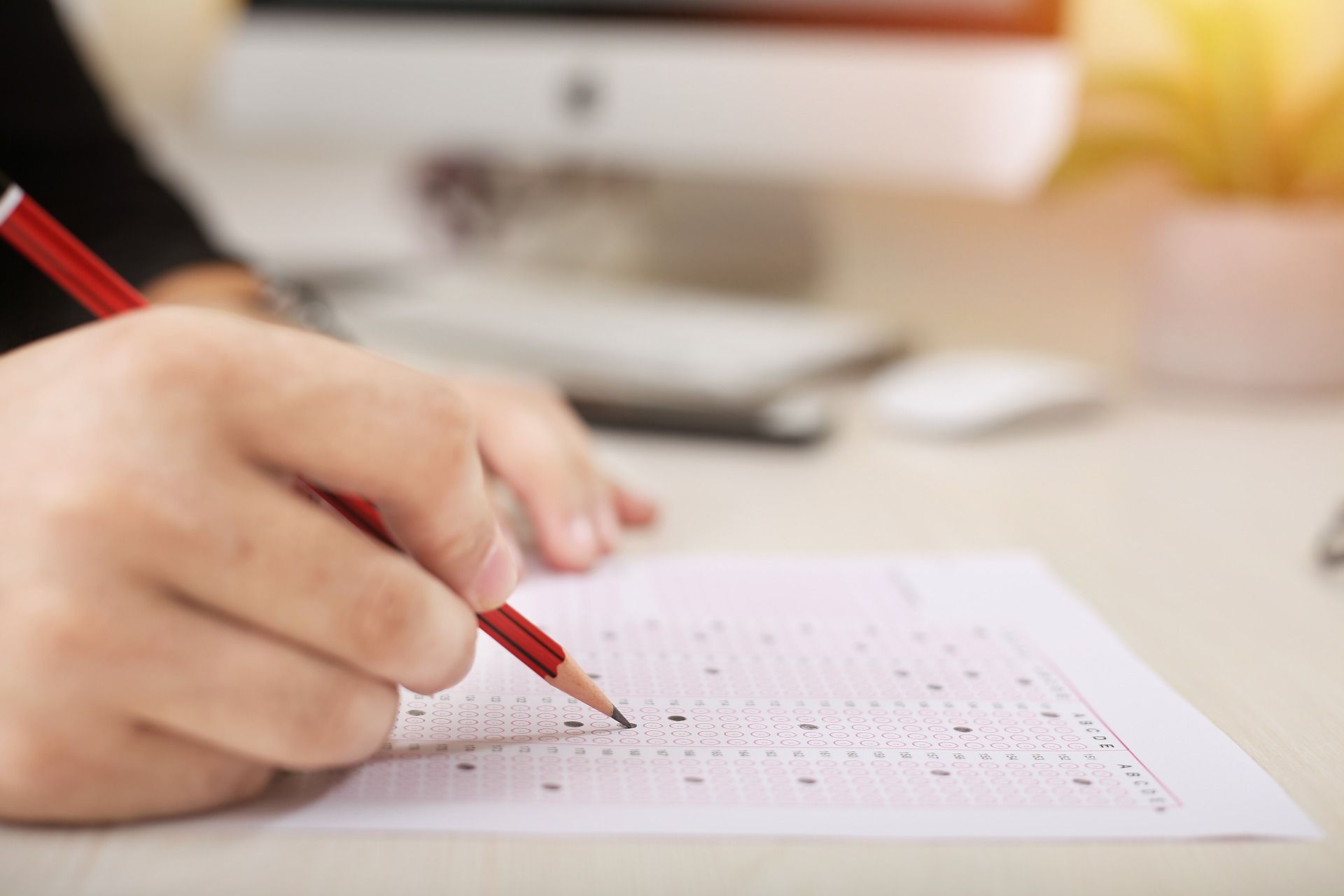
It’s pretty simple: you have one hour to answer 50 multiple choice questions in a closed-book examination. Each question has only one correct answer (worth one mark apiece) and, mercifully, marks are not subtracted for incorrect answers.
Absolutely all of these WSET 2 exam questions are based on material in the textbook, so everything you need to know to pass with distinction is contained in the pages of that book (although Brainscape's WSET-2 flashcards conveniently condense this information for you :). And, finally, you’re required to score 55% on the WSET 2 exam in order to pass the course.
All WSET Level 2 exam questions are curated to reflect the course’s learning outcomes (detailed below), which are weighted as follows:
- Learning Outcome 1: Environmental influences and grape-growing options in the vineyard and how these affect wine style and quality — 5 questions.
- Learning Outcome 2: How winemaking and bottle ageing influence wine style and quality — 4 questions.
- Learning Outcome 3: How all of the above-mentioned factors affect the style and quality of wines made from the principal grape varieties — 19 questions.
- Learning Outcome 4: The style and quality of wines produced from regionally important black and white grape varieties — 12 questions.
- Learning Outcome 5: How the production process affects the styles of sparkling and fortified wines — 6 questions.
- Learning Outcome 6: The key principles and processes involved in the storage and service of wine, and in the pairing of food and wine — 4 questions.
For more guidance, check out What to expect on the WSET Level 2 wine exam and refer to the Wine and Spirit Education Trust’s official WSET 2 specification handbook.
Tips for taking a WSET Level 2 practice exam
There is a ton of value to taking a practice exam before you face the real thing. This is why Brainscape has put together a practice exam for the WSET 2 (with answers), which you will automatically receive for FREE via email when you register for our WSET 2 flashcards.
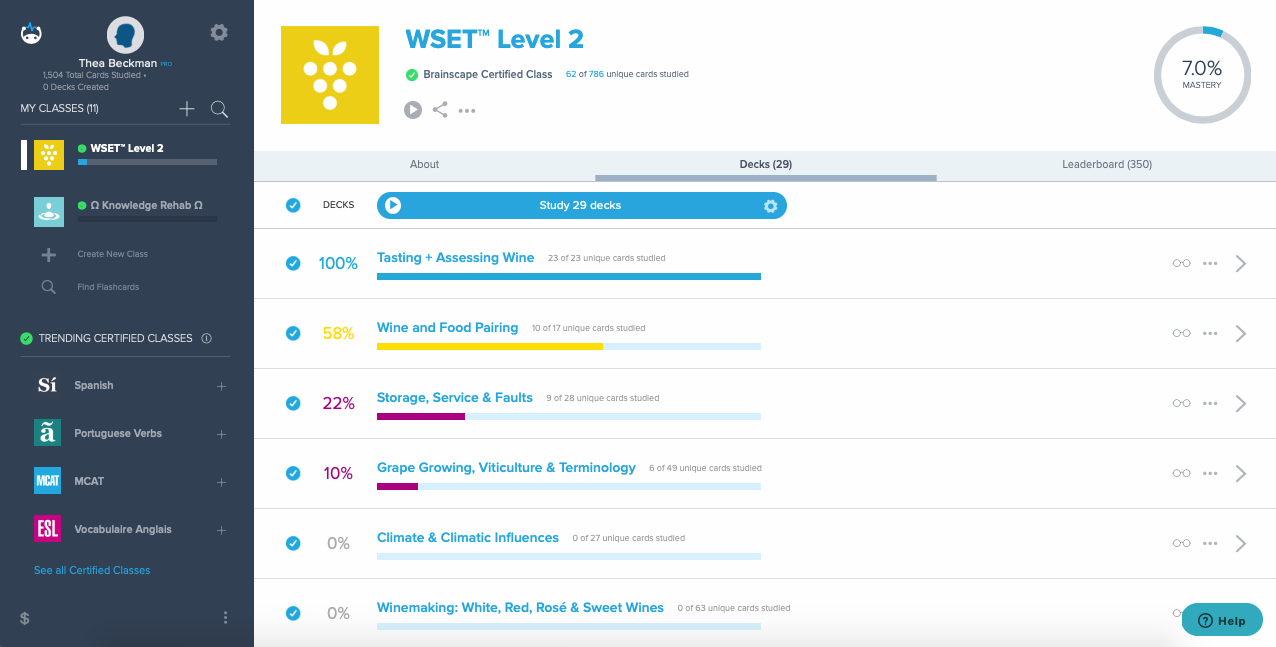
But ... to help you get the most value out of this essential practice, we’ve put together our best tips and here they are:
Tip 1: Take the WSET 2 exam questions like a real test
Running through a practice exam will show you what to expect in terms of how the exam is formatted and the kinds of questions you will have to answer. But if you take the mock test as though it is the real thing it will also give you a taste of how you should pace yourself in the time given.
Find a quiet environment where you can take the WSET Level 2 practice exam and set a timer for 60 minutes. You might also want to figure out a game plan for tackling the exam’s harder questions. Should you skip them and come back to them later? Or should you try to figure them out in the moment?
Read this study guide on the 20 test-taking strategies used by top students.
Tip 2: Read the question carefully

Make sure you read every question carefully before you select or write your answer. Take a deep breath, still your mind, and read the question. Read it again. Understand what is being asked of you and don’t allow anxiety to fuel your response. You do NOT want to squander points on stupid mistakes!
Tip 3: Time yourself
A WSET 2 practice exam gives you a good gauge of how long it takes you to comfortably answer all the questions. It’s also an excellent way to perfect your pacing, so when you take the practice WSET 2, just set a one-hour timer and try to get through it all within that hour.
Pro Tip: Always leave yourself time (approximately 5-10 minutes) to go back and double-check all of your answers for correctness and to ensure you have answered all 50 questions.
Tip 4: Engage your powers of active recall

Active recall is your brain’s ability to remember information from scratch, without having to refer to a textbook, flashcard, or, as is the case with the WSET 2, a list of multiple-choice answers.
Our advice is to read the question thoroughly, use your hand to cover up the multiple-choice answers on the test and answer the question from memory. Once you’ve got the answer in your head, refer to the multiple-choice answers and find it there.
The reason this approach is so advantageous is two-fold:
- Oftentimes students can become overwhelmed, sidetracked, and confused by the variety of answers, which can go as far as making them second guess their initial instincts.
- Using active recall is a much more powerful and effective way to permanently retain information, which matters a whole lot since you’re probably going to want to take this education and apply it to a career in wine!
Remember: thinking of the answer unassisted—by using active recall—will help you arrive at a confident answer before you’ve even looked at the list of possibilities.
Tip 5: Zoom in on your weaknesses
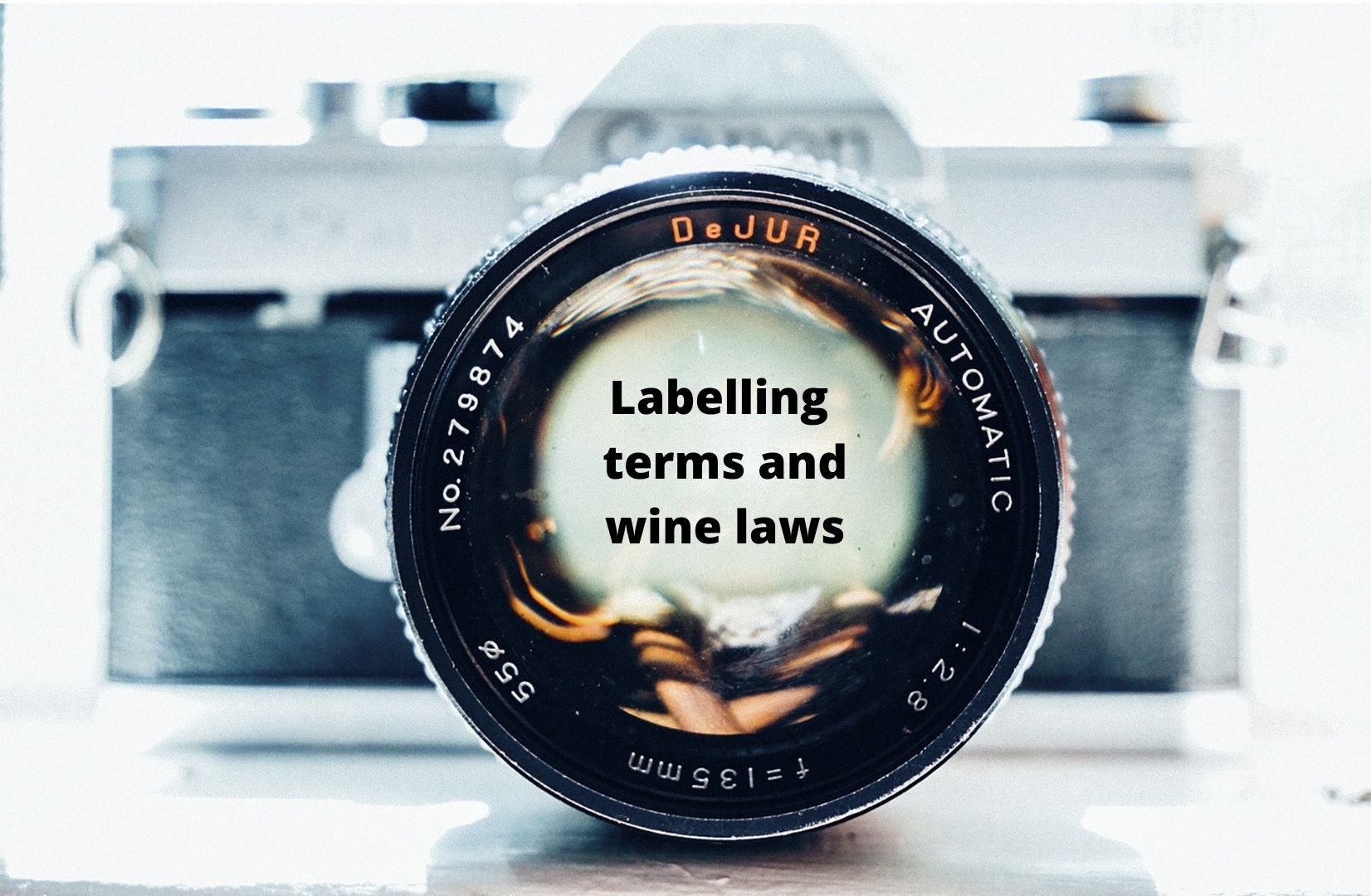
With practice exams, it’s always tempting to skip over the questions you don’t know and just hope to hell they don’t return in the real exam like a zombie in Night of the Living Dead.
This is NOT a good approach. For starters, you won’t feel (or be) adequately prepared; for mains, you run the risk of losing out on precious points; and for desserts, you’ll feel nervous going into the exam.
One of the key benefits of taking a WSET 2 practice exam is to identify and address your weaknesses. So if you do encounter a question you’re unsure of, highlight it. Then, after you’ve finished taking the whole exam, dig into the textbook chapter behind that question and take a baseball bat to that zombie’s head!
Doing this will ensure that you go into the exam with zero knowledge gaps, which is not only great for your confidence but will also position you for a distinction!
Tip 6: Make flashcards for the facts you don’t know (so you will never, ever forget them!)
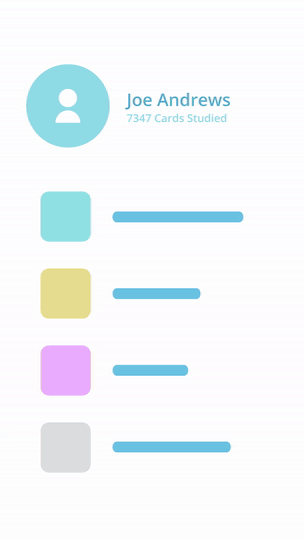
An even better approach to the above-mentioned challenge is to use Brainscape’s web and mobile app to make your own flashcards for the questions (or any wine facts) you’re unsure of in the WSET 2 practice exam. Then, use your flashcards to practice, practice, practice so that the information is so thoroughly banked in your brain that not even a bottle of wine (or two) will make you forget it.
Your own flashcards will be a great complement to the comprehensive collection of nearly 800 WSET 2 flashcards, which Brainscape's panel of certified wine experts curated for us. The app leverages decades of cognitive science to help students learn more efficiently so we really encourage you to subscribe and give it a try.
Plus, you’ll automatically get a free WSET 2 practice exam when you sign up for them!
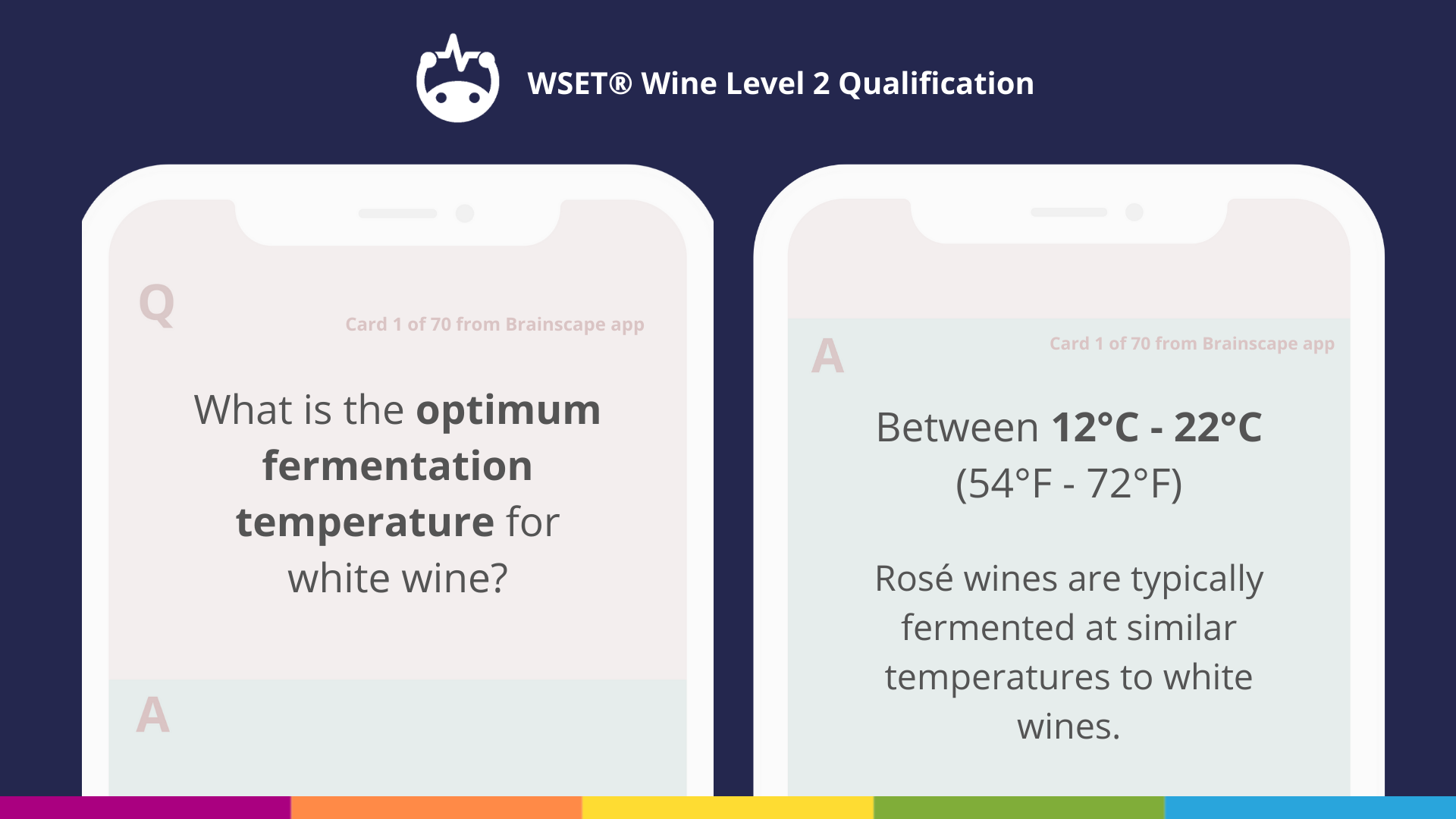
Tip 7: Practice a WSET 2 mock exam early on in the course
Usually, exam practice comes in the days or weeks leading up to an exam. We're suggesting that you throw a major spanner in the works of tradition by taking a WSET Level 2 practice test as early on as possible. “Early on” as in from the outset of your WSET 2 course.
It might not sound like it makes much sense: how are you supposed to answer the questions if you haven’t yet learned the material?
Well, there’s HUGE value in reviewing WSET 2 test questions BEFORE diving into the coursework.
You know that tiny pang you feel when you look at a test question and you’re like: “Oh crap, I have no idea what the answer is!”? What you’re feeling is the panic at having a knowledge deficit. On exam day, a knowledge deficit is a bad thing. BUT right at the beginning of a course, it primes your brain for learning.
When you feel the yawning void of the knowledge deficit, your brain becomes hungry for the information it’s missing. When you do encounter that information in the textbook or in a lecture, your brain will latch onto it like Baby Boomers to their memories of the 70s.
Reviewing a practice exam right at the beginning of the course not only primes your brain for learning (making remembering the material that much easier); it also teaches you to view the coursework through the eyes of the WSET 2 examiner.
This makes learning much more efficient because after reviewing a chapter, you’ll have a ballpark idea of what questions you might be asked on the exam.
For more tips on how to study for the WSET Level 2 exam more efficiently, check out our ultimate guide in the Brainscape Academy.
Tip 8: Keep that 30,000-foot view of the subject

This tip is more related to how you learn throughout the WSET 2 course but it is pretty essential for keeping your studies focused and efficient, which, in turn, will help you prepare for the exam.
Because every bottle of wine tells a story, and each story is such a tangle of characters—climate, soil, grape variety, geography, history, tradition, technique, etc.—the best way to learn it all is to keep a 30,000-foot view of the subject.
This not only helps you make sense of the WSET 2’s rather voluminous content but will also help it stick with you throughout your career in wine.
What we’re trying to say is don’t just rote learn the specifications of the different wine regions. Really understand them and how they relate to each other.
For example: If you truly understand how the presence and proximity of the ocean affects temperature and rainfall, and how these climatic variables affect the vineyard (and what cultivars are grown), you’ll have the intellectual toolkit to understand the winemaking traditions of most of the world’s wine regions.
So, keep that 30,000-foot view of the subject and you’ll ace the WSET 2 exam and retain most of what you learn so that you can eventually take on the WSET 3!
An extra tip for luck ... know your sh*t
Our final tip is to study and study hard. No number of insightful tips or study hacks is going to help you perform better than good old-fashioned studying right from day one of the course.
Download Brainscape’s WSET 2 practice exam here
To get your hands on Brainscape’s WSET 2 exam questions (with answers)—curated by Certified Wine Educator and Master of Wine candidate Sarah Sutel Looper—download our WSET 2 flashcards and it’ll be automatically emailed to you.
WSET 2 practice exams: In summary
There you have it!
- Take the WSET 2 practice exam like a real test so that you know how you should tackle the questions in the time given AND what you’ll need to bring to keep you comfortable.
- Read the question carefully: you don’t want to leave any marks on the table!
- Time yourself to make sure you pace yourself properly and have a little time left over to go back and double-check your answers.
- Engage your powers of active recall by blocking out the multiple-choice options with your hand and thinking of the correct answer from scratch.
- Use the WSET 2 practice exam to zoom in on your weaknesses so that you can bridge any knowledge gaps before tackling the real exam.
- Use Brainscape’s awesome web and mobile flashcard app to make flashcards for the facts you don’t know (so you will never, ever forget them).
- Practice a WSET 2 mock exam early on in the course to prime your brain for learning.
- Keep that 30,000-foot view of the subject—everything makes so much more sense when you appreciate the complex relationships at play—and…
- Know your sh*t: study hard!
If you follow these guidelines, you’ll get the MOST out of any WSET 2 practice questions you do in preparation for the real deal!
Don't miss our other WSET Level 2 study guides:
- How to study for the WSET Level 2 exam more efficiently
- What topics are on the WSET Level 2 wine exam?
- How to get a career in wine by acing the WSET Level 2 exam
P.S. When you're ready to take your next step to WSET Level 3, we have expert-curated flashcards and study guides to help you crush that challenge!
*Disclaimer: Brainscape has worked with top wine experts to supplement the official publications and preparation offered by WSET.
